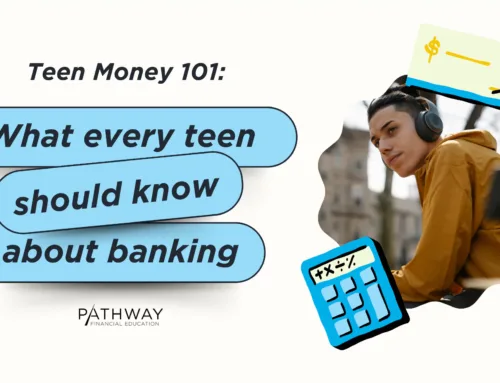
You might not have rent or bills (yet), but you still have money coming in — and you get to decide what happens to it.
Learning how to budget gives you freedom. It helps you make smarter choices, reach your goals faster, and feel more in control of your money now, not just “someday.”
Whether you’re earning your own paycheck, saving up for something big, or just trying to make your gas money last until next week, this guide will walk you through how to build a budget that actually works for your real life.
What Is a Budget (And Why Should You Care)?
A budget is basically a plan for your money. That’s it.
It helps you:
-
Know where your money is going
-
Decide what’s worth spending on
-
Make sure you’re saving for the stuff you actually care about
Think of it like a playlist: You’re deciding which songs (spending) make the cut, and which ones just take up space. When you budget, you’re curating your money to match your goals.
Without a budget, money disappears fast. With a budget, you’re the one in charge.
Step 1: Know How Much Money You’re Working With
Start by figuring out how much money you actually have coming in.
-
Do you have a part-time job?
-
Get an allowance?
-
Occasionally make money babysitting, tutoring, mowing lawns, or selling art online?
Add it all up.
Example:
-
Weekly paycheck from a job: $75
-
Monthly allowance: $20
-
Occasional tutoring gig: $40
-
Estimated monthly income: ~$375
It might not seem like a lot — but once you know your number, you can make a plan that works for you.
Step 2: List Out What You Spend Money On
Now think about where your money usually goes.
Typical teen expenses might include:
-
Gas or public transportation
-
Fast food or snacks after school
-
Clothes, shoes, or makeup
-
Streaming services or gaming subscriptions
-
Hanging out with friends
-
Saving for big things (a car, college, prom, a trip)
Write down everything — even the “little” stuff. (Yes, even that $4 iced coffee counts.)
It’s not about judging your choices. It’s about knowing where your money goes so you can decide if it’s worth it.
Step 3: Use the 50/30/20 Rule
This is an easy way to break down your spending:
-
50% Needs — Stuff you have to pay for (gas, school supplies, lunch)
-
30% Wants — Fun stuff (shopping, snacks, entertainment)
-
20% Savings — For future goals (college, car, emergency fund)
Let’s say you make about $300 a month:
-
$150 for needs
-
$90 for wants
-
$60 into savings
If you don’t have many “needs” right now, great — put more into savings or set a short-term goal to save for something you really want.
You don’t have to hit these percentages perfectly — they’re just a guide to help you get started.
Step 4: Set a Goal That Actually Excites You
Saving money is easier when you know what you’re working toward. Whether it’s something small or something big, having a clear goal makes the “no thanks” to impulse spending a lot easier.
Here are some ideas:
-
$100 for summer fun
-
$500 for a used car or your part of a family trip
-
$40 for concert tickets
-
$200 for college application fees or dorm supplies
Pro tip: Break it down. Want to save $100 in two months? That’s $12.50 a week. Even setting aside $5 every few days can get you there.
Step 5: Track Your Spending (Without Making It Complicated)
This is where most people give up — but it doesn’t have to be hard. You can track your spending in:
-
A notebook or planner
-
The notes app on your phone
-
A spreadsheet (if that’s your thing)
-
A free app like EveryDollar, Goodbudget, or Mint
The goal? Just know where your money goes.
When you track it, you can see patterns — like “Whoa, I spent $60 on snacks last month.” From there, you can make smarter choices.
Real Talk: Budgeting Isn’t About Being Perfect
Some months you’ll stick to your plan. Some months you’ll spend too much. That’s okay.
Budgeting isn’t about being perfect — it’s about being aware and making better choices as you go. Every time you pay attention to your money, you’re building a skill most people don’t learn until after they’re already in debt.
You’re ahead of the game — and your future self will seriously thank you.
Up next, check out Saving vs. Spending: How to Build Smart Money Habits in High School.




